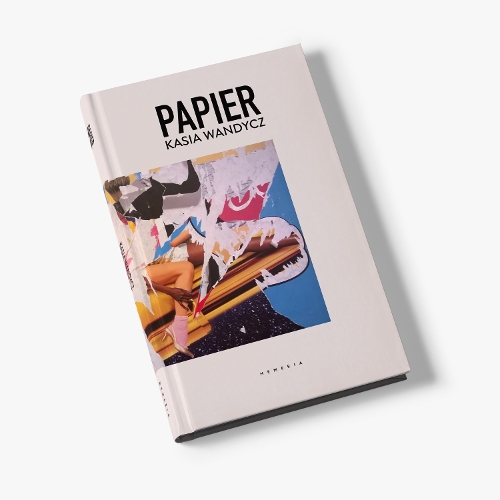
Papier
(Hardback)
Publishing Details
Papier
By (Author) Kasia Wandycz
Preface by Olivier Deloignon
Hemeria
Hemeria
13th August 2025
France
Classifications
General
Non Fiction
Other graphic or visual art forms
Popular culture
History of art
Individual artists, art monographs
Physical Properties
Hardback
84
Description
Pop art, urban art, painting Kasia Wandycz's work is on the border of all these arts. If the final image is a photograph, the artist plays with codes to better give us free rein to our interpretation. By restoring a part of the collective memory that is written in urban space, it allows us to re-enchant an entire world prey to oblivion or destruction.
Each work tells a new story, which everyone can write. A creative gesture through a look, it is available for a new appropriation by the person who looks at it, inspired by the treasure hunt that it has created: what posters are these, what are they what we see, who does it make us think of We thus rediscover the pleasure of looking, of questioning ourselves, of searching. As we are faced with the profusion of images, this downtime is a precious gift given to us.
Kasia Wandycz's goal remains above all to make us perceive the beauty of a shape, a color, a thickness of tears. To apprehend the beauty of these battered but living papers, to feel their volume, their relief. Distortions of reality, poetic works, these photographs compose a visual and graphic universe that gives rise to emotion, joy and nostalgia. Leaving the anonymity of the street, they enter a new space of contemplation when the walls of the city give way to the walls of a gallery.
Author Bio
Born in the United States, of Polish origin, Kasia Wandycz graduated with a Bachelor of Arts degree in Graphic Arts from Connecticut College, USA. She also studied painting at the Academy of Fine Arts in Cracow, Poland. She lives and works in Paris and was a photographer for more than 25 years for the French weekly magazine Paris-Match.
In her artistic practice, she focuses on paper as both a substance and a subject. In scraps of used, printed and torn paper, she finds poetry, and in her photographs, they gain new existence and meaning. Printed paper, which we encounter during our walks in public places, is a part of commercial advertising or political propaganda. Wandering around contemporary metropolises, including Paris, which she knows so well, she draws her own reporter's map of cities "en flneur", transforming the chosen material into a document of time's passing. Aragon, in the Villager of Paris, described with nostalgia the structure of the city transformed by modern boulevards.
